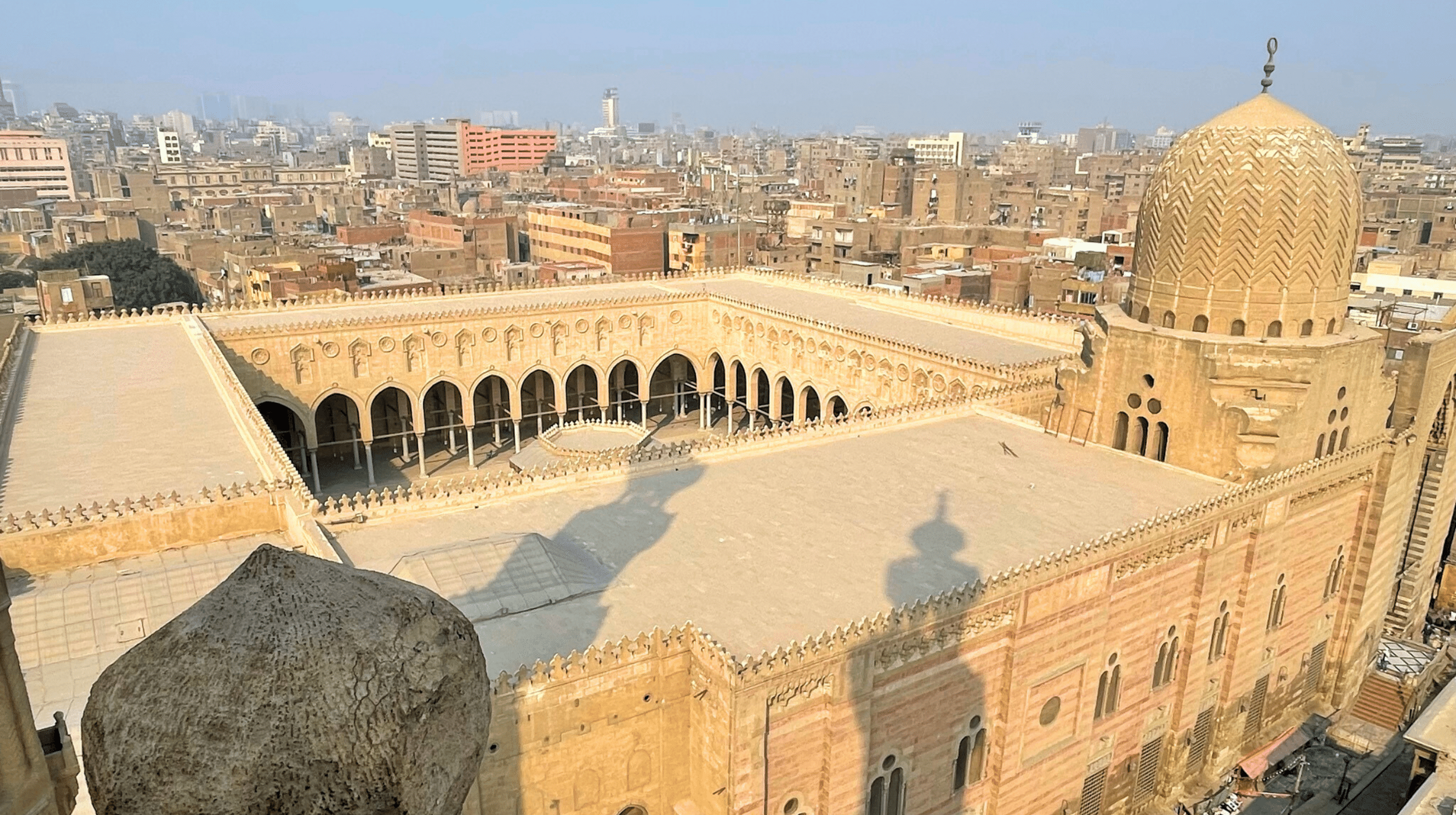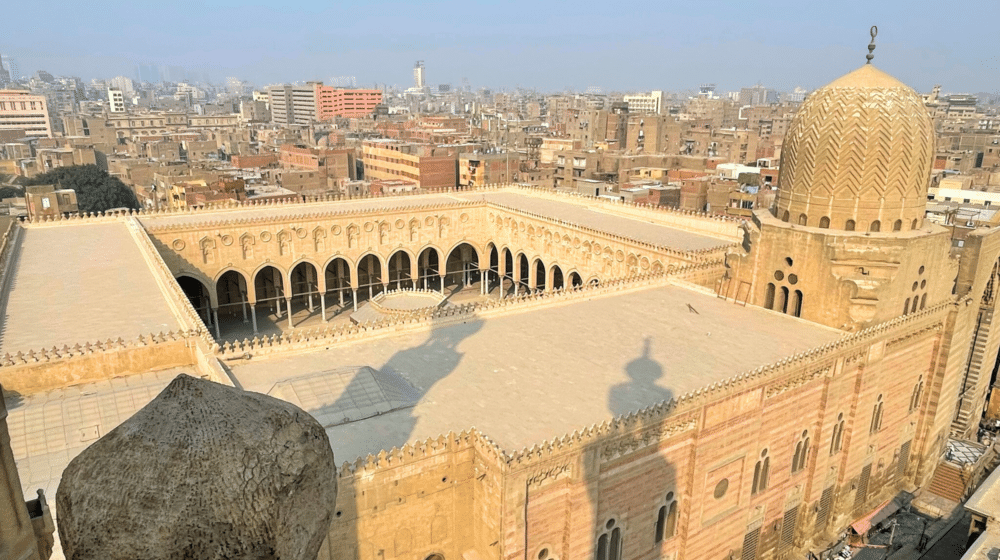
The Pastry Chef of Cairo
Walking along the stone streets of an ancient city, while shadows draw elongated shapes on the ground, pushed by the setting sun.
Places speak to those who listen to them, and tell a story: through it, in filigree, the memory of the people who have passed through them or who have lived there, leaving something of themselves behind, shines through.
In places as fragile and destroyed as the countries of the Middle East, the first thing that vanishes, in the war narrative, is History; and History also understood as belonging, as the cultural and personal identity of peoples who in themselves preserve a world built over time. It is a world of which there are witnesses, although often overlooked. Thus was born our desire – which then becomes our mission: to enhance the silent witnesses of what belongs to those peoples that today the world knows mainly as victims, as actors of complex conflicts that seem to totalize their cultural identity since the beginning of time. Yet this is not the case.
È proprio questo che Martino cerca tra le carte dell’archivio del Centro francescano di studi orientali cristiani del convento Musky, al Cairo: le sue giornate scorrono tra vecchie fotografie, lettere e documenti personali, un oceano di parole e immagini che testimoniano un mondo sommerso e quasi dimenticato. «L’archivio del Musky contiene la memoria della comunità latina del Cairo, quindi di una comunità che di fatto ad oggi sta scomparendo: i discendenti di queste persone sono andati quasi tutti all’estero, qui rimane solo qualche anziano del luogo», spiega Martino. Questo stesso fatto costituisce già una buona ragione per preservare la memoria storica del luogo: «Se queste persone scompariranno del tutto e non sarà rimasta alcuna traccia, si perderà una cosa importantissima: il quartiere del Musky è intrinsecamente e costitutivamente multiculturale e multireligioso, con tante confessioni anche cristiane diverse. Se una comunità scompare è importante che le altre sappiano, che non sono state gli unici ad aver vissuto in questo posto».
Preserving memory to preserve awareness, and to protect the rights of minorities and the possibility of peaceful coexistence. The memory of those who live is ephemeral, it exists only as long as the repository of memories lives: “There is a 95-year-old friar who is a sort of living archive, because he always tells what the neighborhood was like before the 50s, when Nasser imposed that all Europeans in Egypt leave the country. He still remembers what that world was like: he remembers, for example, that in this neighborhood alone six different Armenian newspapers circulated. When he is no longer there, the archive will remain”, and then all the stories hidden among the shelves will remain to be discovered.
Martino defines the archive as “a photograph that covers the stories of an entire community through the centuries, stories of people that it would be nice to be able to reconstruct and tell“. “I’m slowly reconstructing the story of a Venetian merchant, for example, who, between 1600 and 1700, had a shop right below the friars, and helped them with some bureaucratic and legal matters, such as obtaining lease rights to stay in the convent. Among other things, it is interesting that even now, right under the convent, there are so many shops, and one of these shopkeepers acts as the legal representative of the friars of the convent: it is a continuity that makes you smile, and reduces the perceived distance between past and present.”
“From the documents it is clear that in his shop this merchant sold sweets, and was in fact called by everyone in the neighborhood “The pastry chef“. In other documents, however, I found different information: an inventory kept in England describes his activity as a pharmacy. So he was probably a pharmacist who, on the surface, was a pastry chef, and then under the counter distributed drugs to the entire Western community!”
There are many stories like this, in a long-lived archive like that of the Musky: stories of simple people, artisans, merchants, stories of nobles, of famous people who have passed through here for various and eventual reasons. Everyday and folkloristic stories, which tell of a humanity whose existence must not be erased. Some time ago we told about the afternoons of reading Palestinian fairy tales that Tali organizes at our center in Bethlehem. When asked why he chose to read those fairy tales, Tali replied that “I chose this book because it is a precious form of oral artistic heritage. These stories are ancient, handed down orally over time, from generation to generation, they must not die. It is a heritage that belongs to the Palestinian community: it must remain etched in our minds and conscience.”
At the base of that project there is the idea that educating children to love the fairy tales of their own tradition means fighting against the disappearance of an identifying popular culture; something similar also animates Martino’s work, and, more generally, the commitment of Pro Terra Santa to the conservation of places and their artistic and cultural heritage. “When I complete my thesis and finish the book in which I reconstruct the whole history of the convent, I would like to find a way to tell this story to the people I met there and who accompanied me for a year”: Martino is very keen on the fact that what his work will bear fruit is a treasure first and foremost for the people who live in the Musky district. “It’s also a bit of a restitution, in some way. That’s right. I don’t want to be someone who arrives, does his research, and then leaves: I want to find a way to give all this back to the people there, so that they are more aware of their history, so that they can regain possession of it.”
